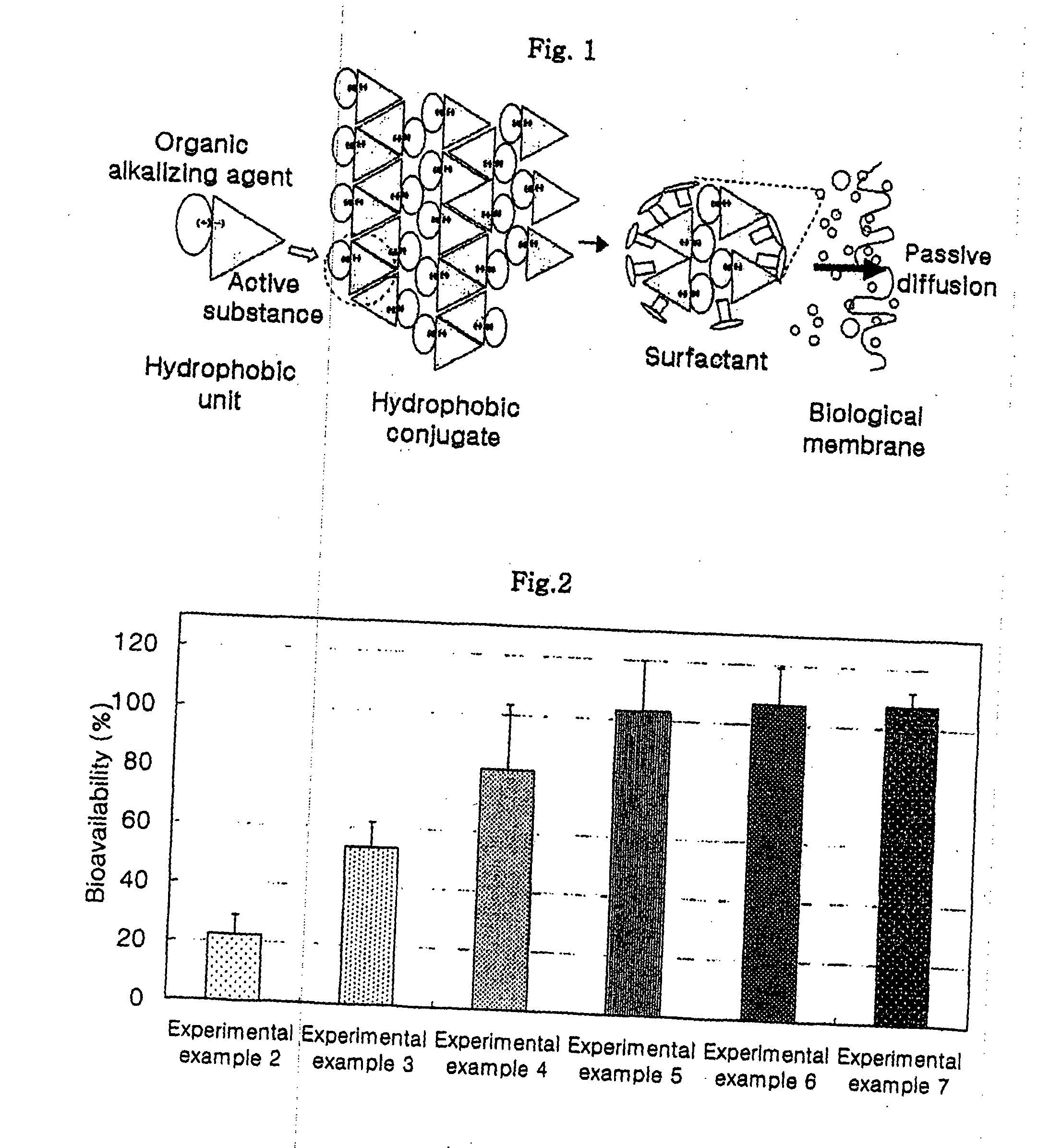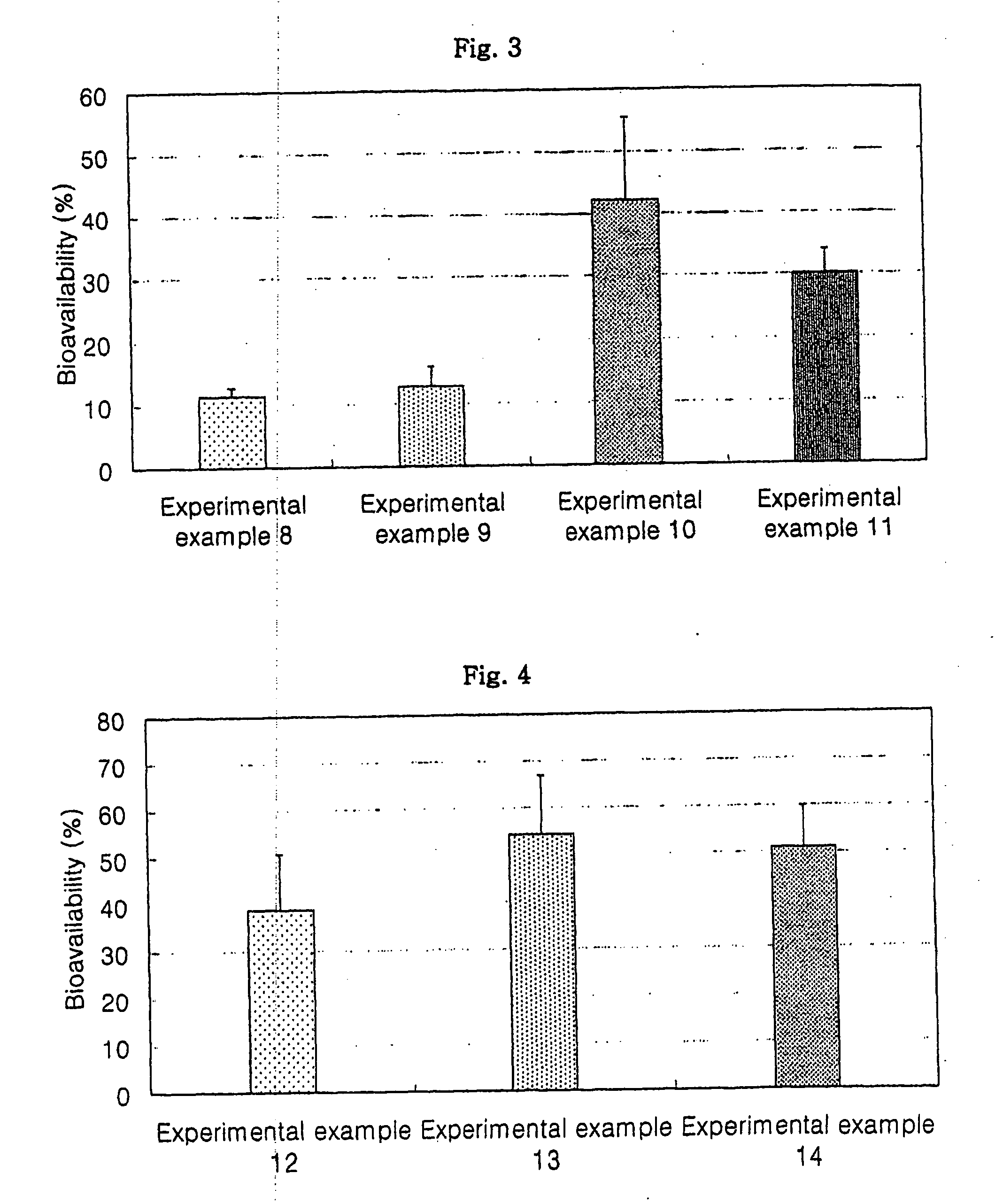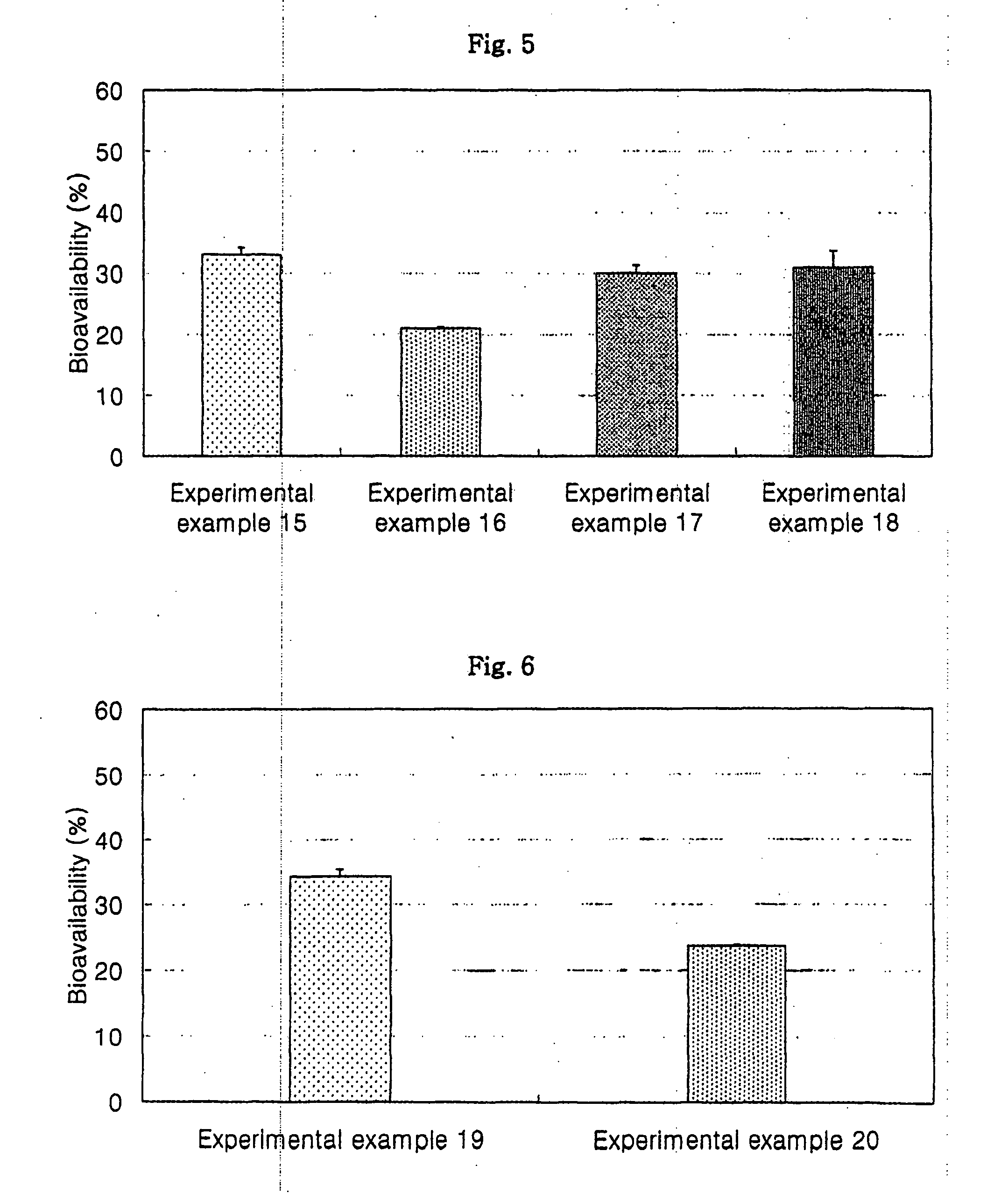Oral formulations for poorly absorptive hydrophilic drugs
a hydrophilic drug and oral formulation technology, applied in the field of oral formulations of hydrophilic drugs, can solve the problems of not being able most highly polar drugs are very limited in their ability to pass the lipid membrane, etc., and achieve the effect of increasing the oral absorption rate and reducing the polarity of the active substan
- Summary
- Abstract
- Description
- Claims
- Application Information
AI Technical Summary
Benefits of technology
Problems solved by technology
Method used
Image
Examples
preparation examples 1 to 10
[0039] In Preparation Example 1, 1 g of ceftazidime as an active substance (drug) and 273.6 mg of arginine as an organic alkalizing agent were added to 100 ml of water. The resulting mixture was continuously stirred until it became a visually transparent solution.
[0040] In Preparation Examples 2 to 6, 1 g of ceftazidime sodium as an active substance, and 215.9 mg of glycine ethyl ester hydrochloride, 307.4 mg of leucine ethyl ester hydrochloride, 360.8 mg of phenylalanine ethyl ester hydrochloride, 422.1 mg of tryptophan ethyl ester hydrochloride and 216.1 mg of arginine ethyl ester hydrochloride, respectively, were added to 100 ml of water, together with different organic alkalizing agents. The resulting mixtures were continuously stirred until they became visually transparent solutions.
[0041] In Preparation Example 7, 1 g of ceftazidime as an active substance and 306.7 mg of meglumine as an organic alkalizing agent were added to 100 ml of water. The resulting mixture was continu...
preparation examples 11 and 12
[0044] In Preparation Examples 11 and 12, 1 g of ceftazidime sodium as an active substance, and 351.1 mg of 1-decanoyl-3-lysine glycerol.2HCl (decanoic acid 3-(2,6-diamino-hexanoyloxy)-2-hydroxy-propyl ester.2HCl) and 395.1 mg of 1-dodecanoyl-3-arginine glycerol.2HCl (dodecanoic acid 3-(2-amino-5-guanidinopentanoyloxy)-2-hydroxy-propyl ester.2HCl) as organic alkalizing agents, respectively, were added to 100 ml of water. The resulting mixtures were continuously stirred until they became visually transparent solutions. After the transparent solutions were frozen at −70° C., they were dried, in vacuum to prepare dried samples of Preparation Examples 11 and 12, respectively.
example 7
[0051] 1.36 g of the dried sample prepared in Preparation Example 4 and 1.5 g of sugar monopalmitate (HLB 15) as a surfactant were mixed, and then 5% by weight of starch sodium glycolate as a disintegrating agent and 3% by weight of hydroxypropyl cellulose as a binder, based on the total weight of the mixture were added thereto. The disintegrating agent and the binder are pharmaceutically acceptable excipients commonly used in the art. The resulting homogeneous mixture was wet-granulated with water and dried. The dried mixture was sieved using a 20-mesh standard sieve to form granules. After 1% of magnesium stearate as a lubricating agent was added to the granules, the resulting mixture was homogeneously mixed to form final granules.
[0052] The final granules were tableted using a tableting machine so that the tablets contained 300 mg of the active substance. Thereafter, a suspension containing 110 mg of a hydroxypropylmethyl cellulose acetyl citric acid salt, 20 mg of triethyl citr...
PUM
| Property | Measurement | Unit |
|---|---|---|
| partition coefficient | aaaaa | aaaaa |
| size | aaaaa | aaaaa |
| partition coefficient | aaaaa | aaaaa |
Abstract
Description
Claims
Application Information
 Login to View More
Login to View More - R&D
- Intellectual Property
- Life Sciences
- Materials
- Tech Scout
- Unparalleled Data Quality
- Higher Quality Content
- 60% Fewer Hallucinations
Browse by: Latest US Patents, China's latest patents, Technical Efficacy Thesaurus, Application Domain, Technology Topic, Popular Technical Reports.
© 2025 PatSnap. All rights reserved.Legal|Privacy policy|Modern Slavery Act Transparency Statement|Sitemap|About US| Contact US: help@patsnap.com



